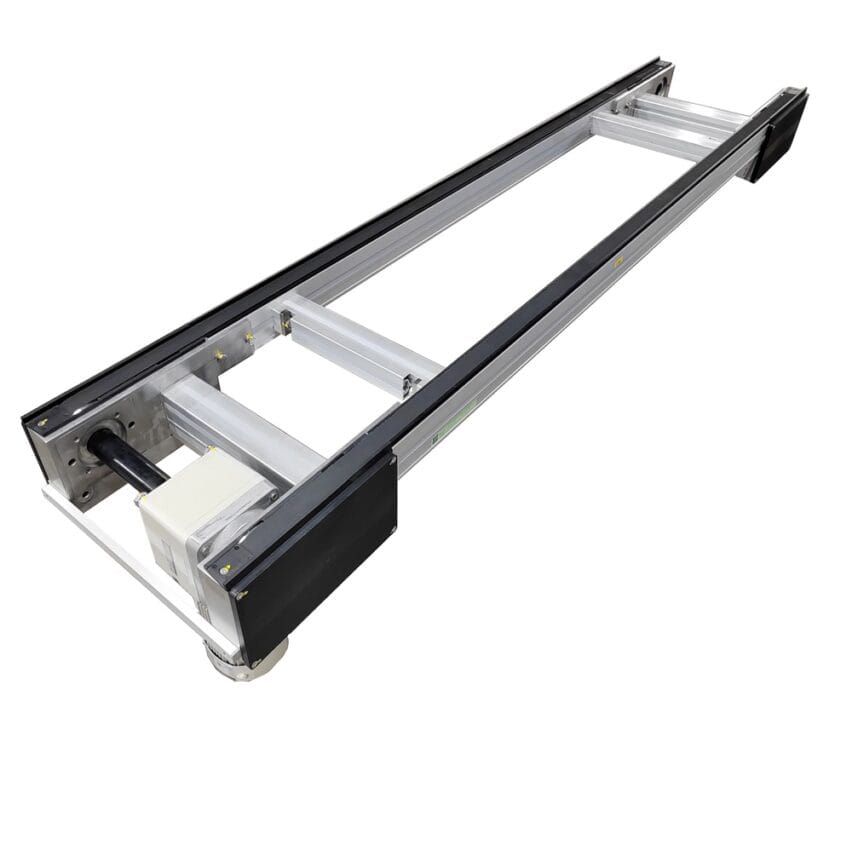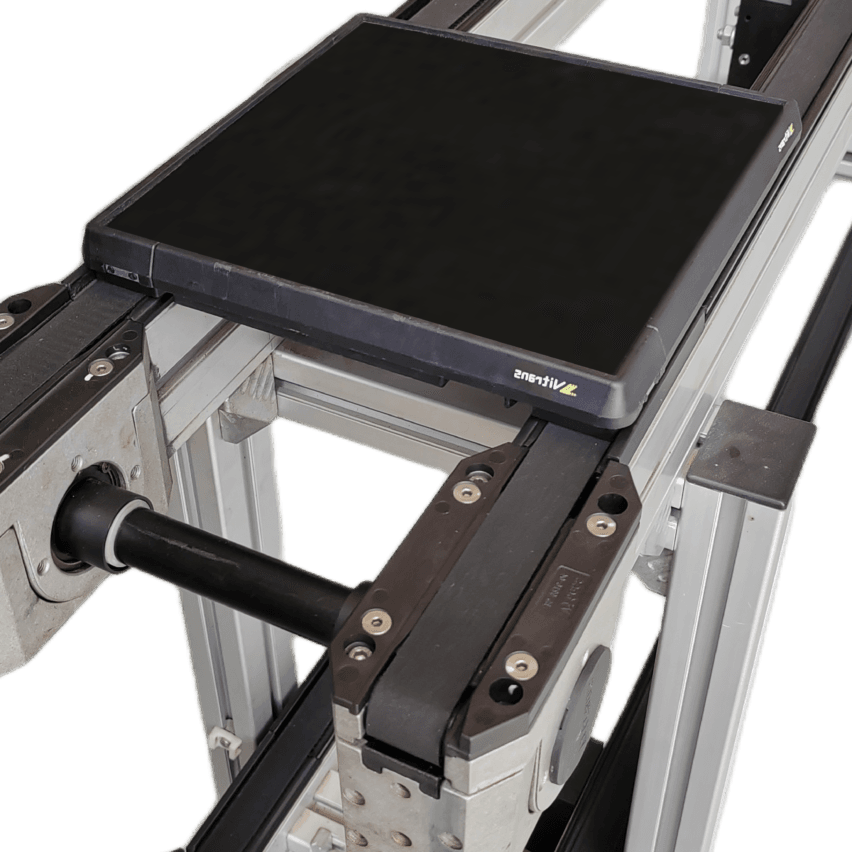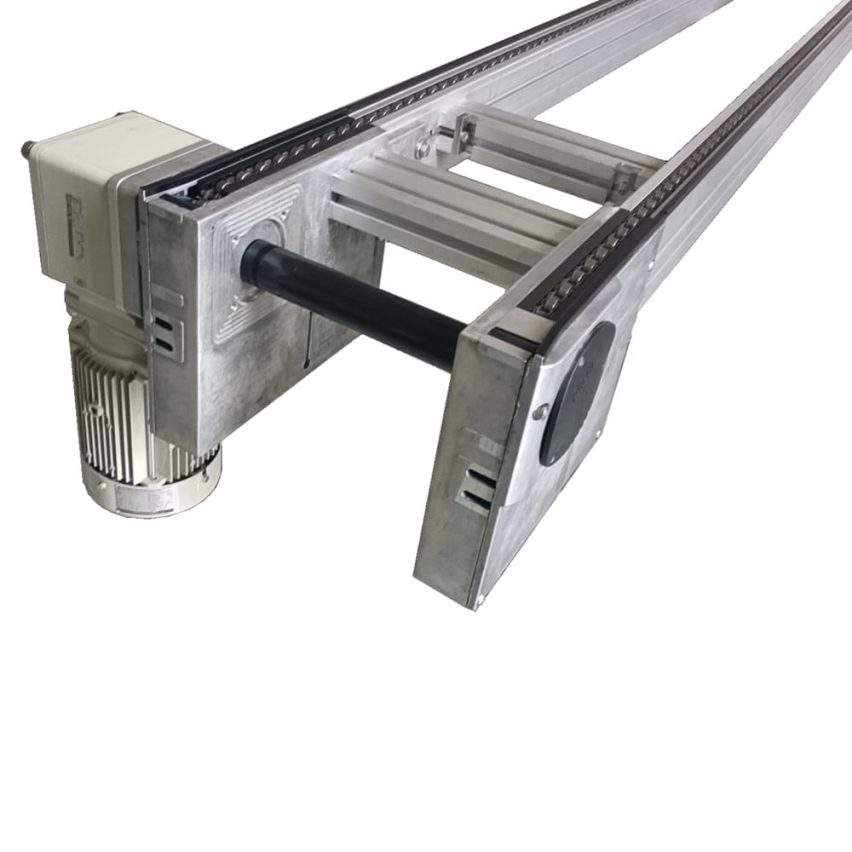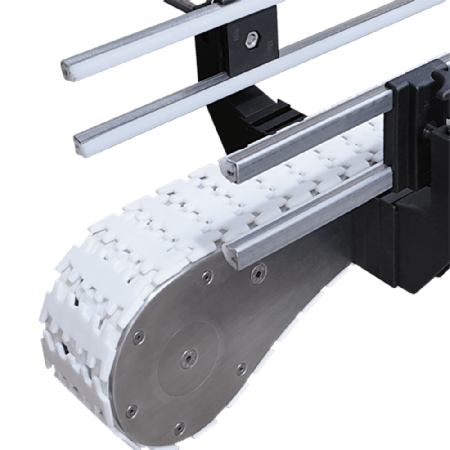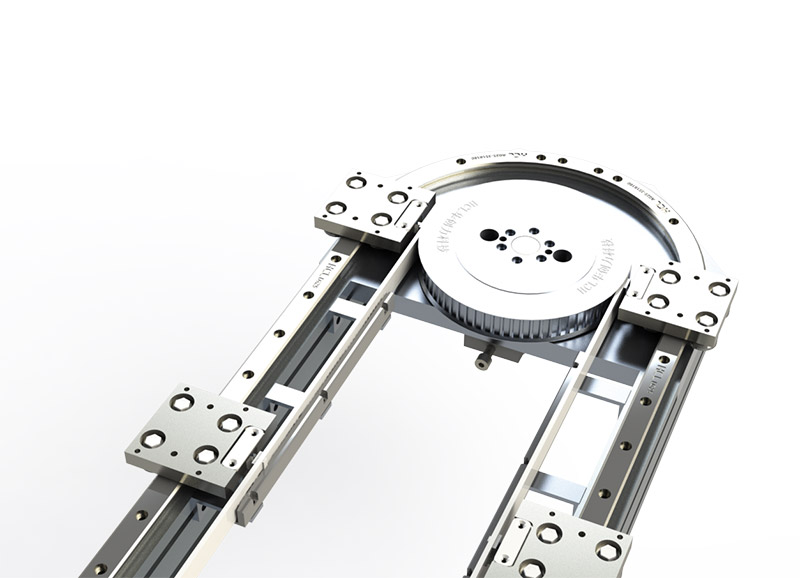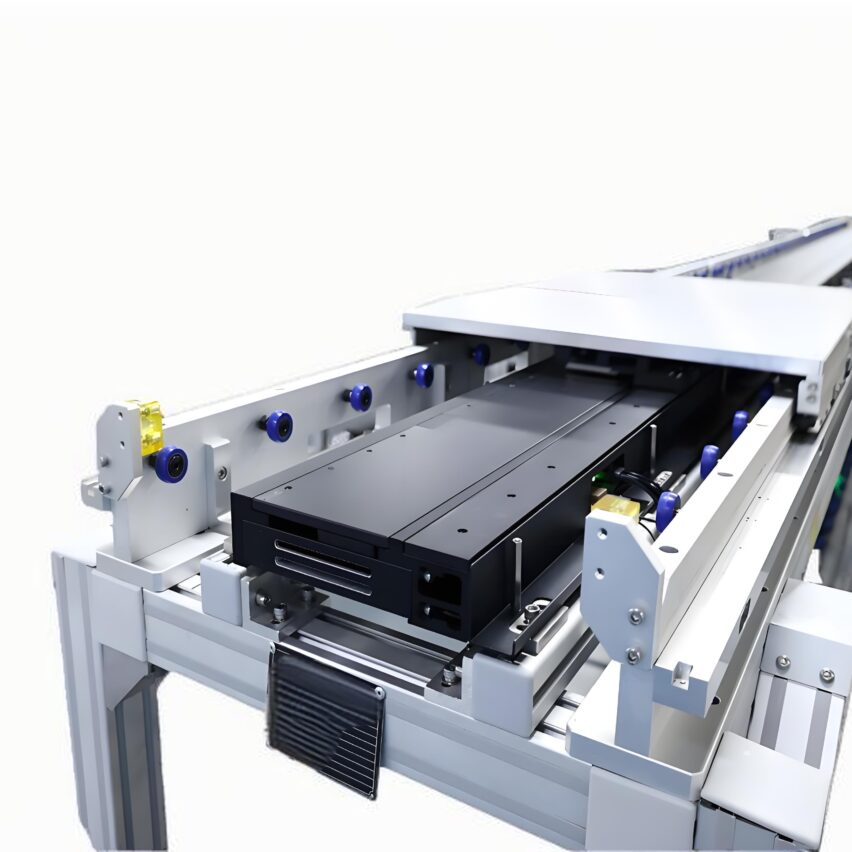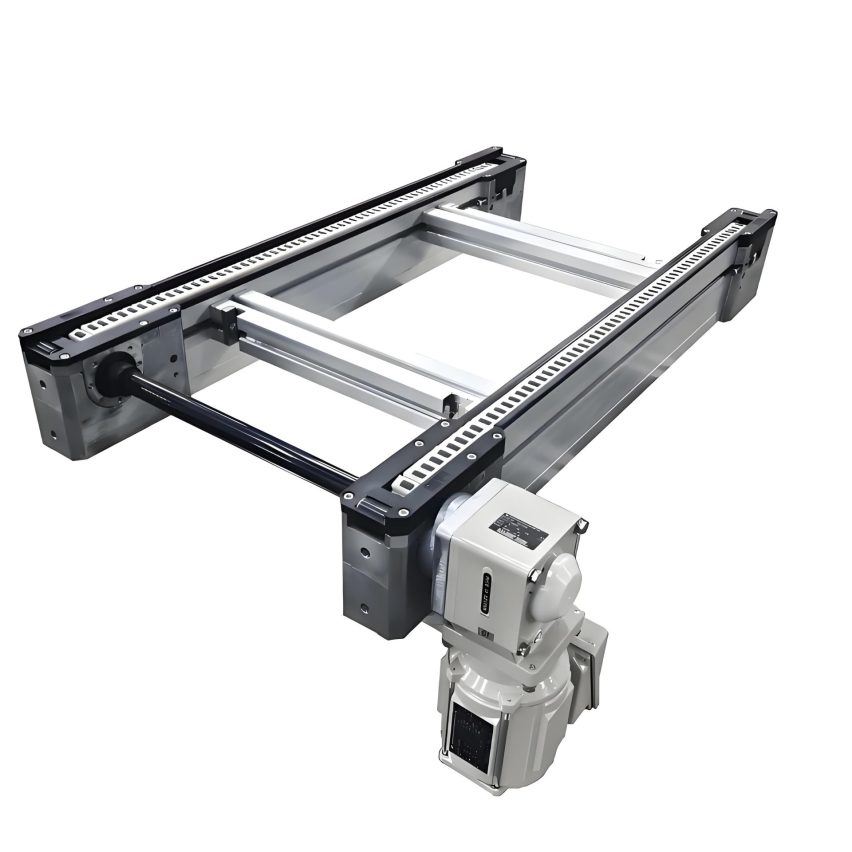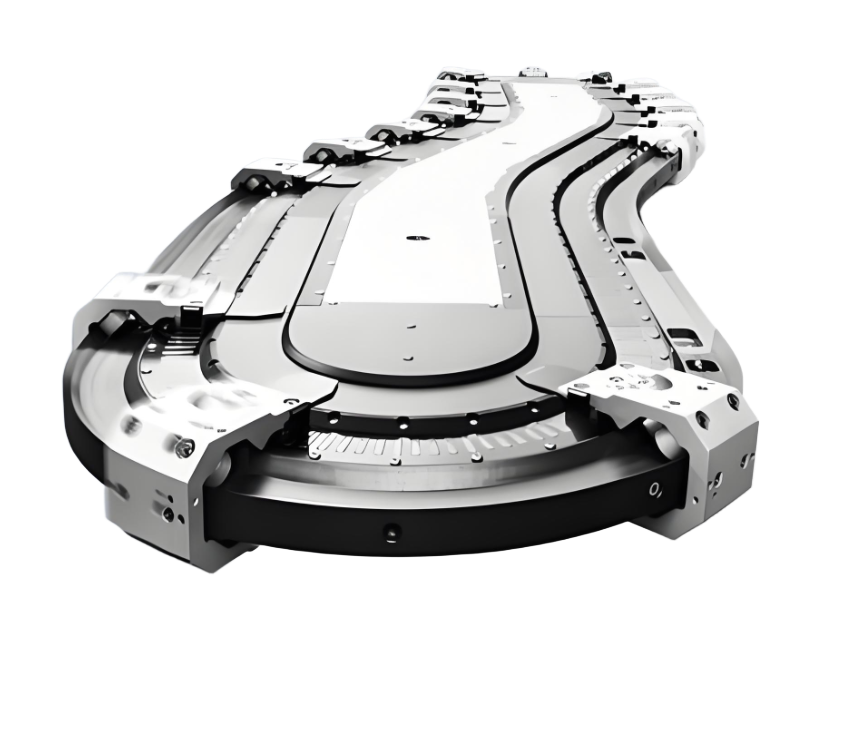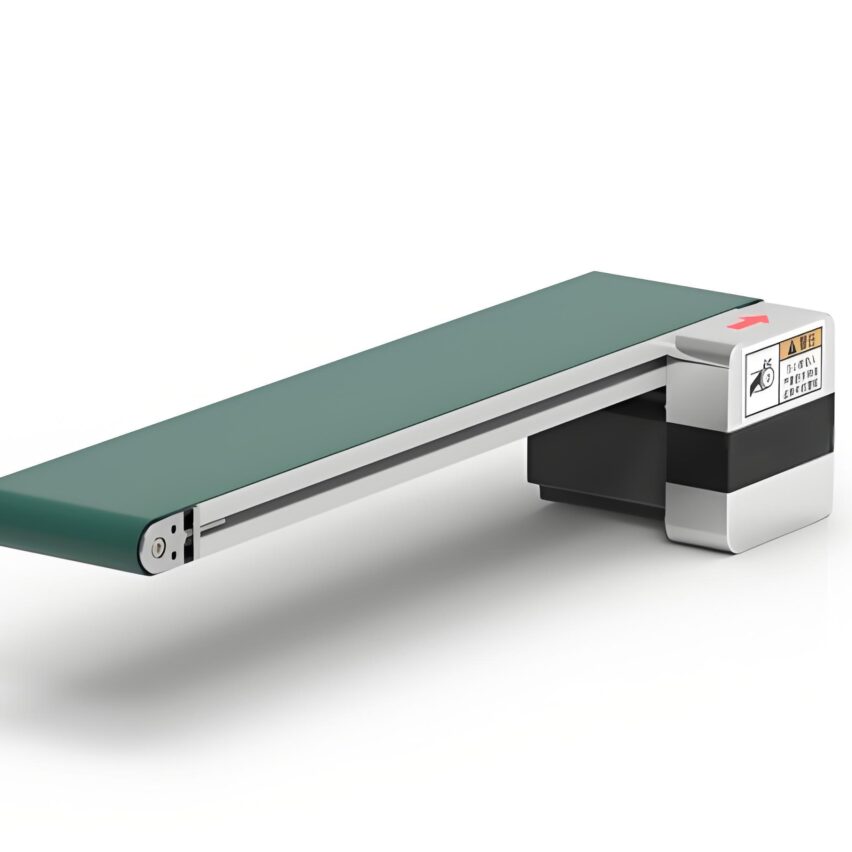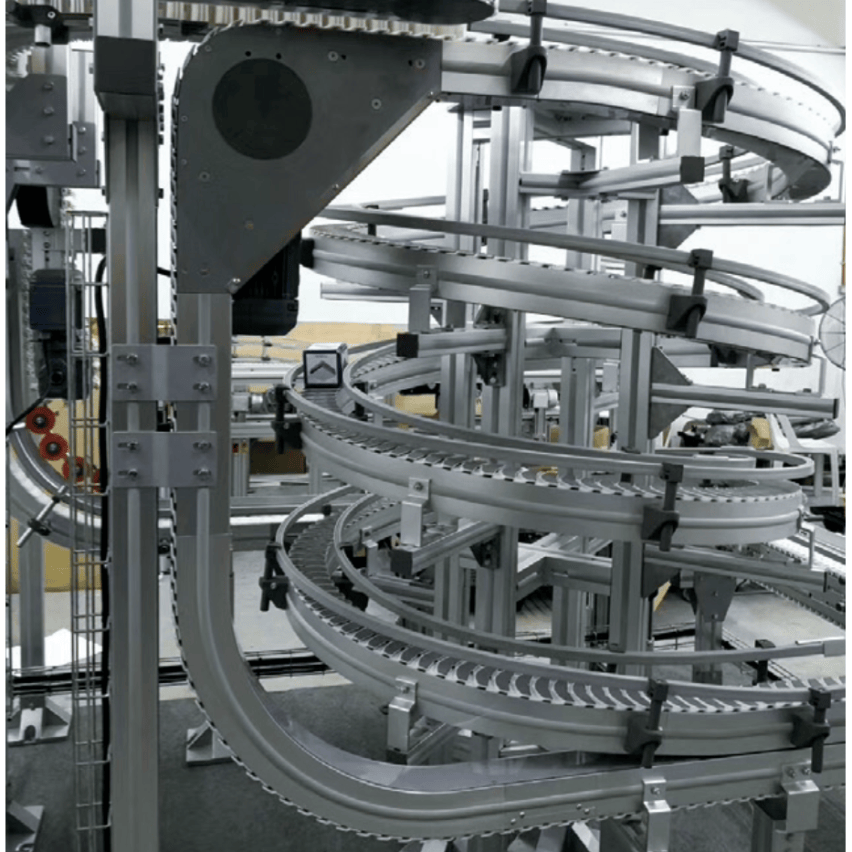The conveyor line in the factory that "runs faster than the chain", is the selection of the type makes your head big? 🤯 Don't panic! Let's use the vernacular today to disassemble the speed chain selection ofThe three lifebloods - load, speed and materialThe first thing you need to know is how to choose one!
🧩 I. Core formula.How do you calculate the load? First grab the "weight per metre"!
It's not a head-scratcher to choose a multiplier chain.The first step is to figure out how much the conveyor weighs per metre.! The formula is thieves simple:
WA(kg/m) = (W1 + W2) / PL
- W1: Weight of the artefact (e.g. if you ship a mobile phone case, 2kg each)
- W2: Pallet/workpiece weight (common steel plate 15kg)
- PL: Pallet travelling distance (e.g. line length 10 metres)
Take a chestnut 🌰:
An electronics factory ships circuit boards with W1 = 200kg (100 pieces x 2kg), W2 = 15kg, PL = 8 metres →WA=(200+15)/8≈27kg/m
📌cruxThis value directly determines the chain type! For example, WA≤30kg/m can be selected as light chain (e.g. WCHE3).
⚡ II. speed metaphysics.2.5x vs 3x, choose the wrong one and cry in the workshop!
The "speed" of the speed chain is not a gimmick butHigher speed ≠ better! Let's look at the comparison first:
| parameters | 2.5x chain (BS25) | 3x chain (BS30) |
|---|---|---|
| Applicable loads | ≤500kg (appliances, packaging)📦 | ≤2000kg (automotive, heavy industry)🚗 |
| Chain speed | 2-10 metres/minute | 2-15 metres/minute |
| Workpiece speed | 5-25 metres/minute | 6-45 metres/minute |
| power consumption | Lower (less friction) | Higher (strong drive required) |
| risk point | overloaded and prone to lagging | Ultra 30% load failure rate ↑50% |
How to choose? Look at the scene!
- Electronic factory mobile phone assembly line(Light load + high speed): Select 3x speed chain, the workpiece "flies" to 15 m/min and pulls at full capacity!
- Automotive engine assembly line(Heavy + medium speed): with a 2.5x chain, speed control at 8 m/min, steady as an old dog.
💡soul searching: Why are 3x speed chains more afraid of overloading?
A: The roller diameter is large (D/d=2), the chain force is more concentrated, and the overload will collapse to you in minutes!
🛠️ iii. Material vs.Nylon, steel, stainless steel, who's your cup of tea?
Choose the wrong material and you lose everything! Directly onThe life and death of the three materials::
-
Engineering Nylon (Lightweight King)
- vantage: light, cheap, anti-static (electronics factory gospel)
- drawbacks: Poor abrasion resistance, don't touch heavy goods!
- extreme boundary: Single point load ≤ 500kg, WA ≤ 30kg/m.
-
All-steel chain (Heavy-duty Warlord)
- manufacture with hands in one's mouth: 4000kg at a single point (a car factory transported 3 tonnes of chassis for 8 years without a strike)
- shortcomings: Expensive! Needs to be lubricated with lithium grease every 3 months.
-
Stainless steel (special forces)
- corrosion resistance: Food factory soy sauce dip? Piece of cake!
- heat-resistant: Paint line 600 ℃ baking does not soften (ordinary steel early melt).
📌Guide to avoiding the pit::
Choose nylon for electronics shops, all-steel for auto plants, and stainless steel for soy sauce factories!
🌧️ IV. Environmental adaptation.High temperature, dust, humidity? One trick to crack it!
What are you afraid of?The environment pits you!So much for coping:
- hot shop(e.g., welding wire):
expense or outlayHardened alloy steel chain(Temperature resistance ≥ 600 ℃), ordinary steel over 200 ℃ on the soft feet. - Dusty/humid environments::
plusSealing cover + roller dust cover! A food factory relied on this trick and the chain life soared from 1 to 3 years. - Anti-static requirements(electronics workshop):
integrated (as in integrated circuit)conductive sheaveThe resistance value is ≤10⁶Ω to avoid dust absorption affecting the accuracy.
💡lesson learnt through blood and tears::
A factory in the south to save costs did not install moisture-proof cover, the results of the chain rusted into a twist - save a small amount of money to lose a lot of money!
🔧 v. Maintenance and costs.The secret to saving money is hidden in the details!
You think you're done after the election?Maintenance is the big long-term cost.!
- Routine maintenance::
Steel chains are lubricated every 3 months (lithium-based high-temperature resistant grease), nylon chains are maintenance-free but short-lived. - Maintenance-free solutions::
food gradeSelf-lubricating chain(high price 30% but life ≥ 5 years), suitable for unmanned workshops. - Cost optimisation::
- Light load line with nylon + single speed chain, cost down 30%↑;
- Heavy duty lines go for all steel + modular construction, expensive but lasts 10 years.
📌Golden Rule::
Actual loadDon't exceed the nominal value of 80%.! For example, a chain marked 1 tonne is the most stable for transporting 800kg.
❓ VI. Self-questioning.The 3 most common questions asked by white people
Q1: What exactly is the chain speed?
A: Look at the process beats first! For example, it takes 30 seconds to assemble a part, and the distance between stations is 1.5 metres →Work plate speed = 1.5 metres/0.5 minutes = 3 metres/minute→ Counterthrust chain speed (1.2 m/min required for 2.5x chain).
Q2: What if the thread body is too long?
A: Single section drive ≤ 40 metres! Extra long onSegmented splicing + independent motor(one for every 20 metres) and can also be speed-regulated in sections.
Q3: Why does my multiplier chain always run out of alignment?
A: 90% yesThe tension is not set properly.! Quarterly check chain sagging ≤ 2%, over immediately screw the tensioning wheel.
💭 Exclusive Insights.Forward-looking design for less money!
After twenty years of line design, let's say something heartfelt:
- hardware reservation: Add on both sides of the railT-slot/Quick Connect SocketThe sensor and robotic arm do not need to be drilled at a later stage!
- Load redundancyThe motor is selected according to 800kg! When upgrading, just add the goods and save the money to change the whole set.
- intelligent ambush:.Select a PLC that supports the Profinet protocol.(e.g. Siemens S7-1200) and seamless linkage to future MES systems.
- Space Mind: Both ends of the linear bodyReserve 3-5 metresIf the boss wants to add an inspection station one day? Arrange it right away!
Seen too many plants trying to save the initial 10% cost, only to spend 50% more on the retrofit -The multiplier chain is the artery of the production line, don't let it jam up your future!🚀

